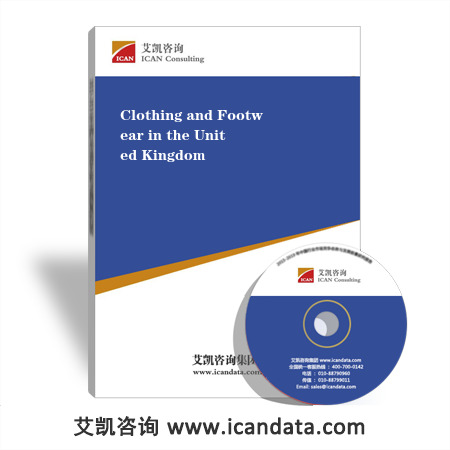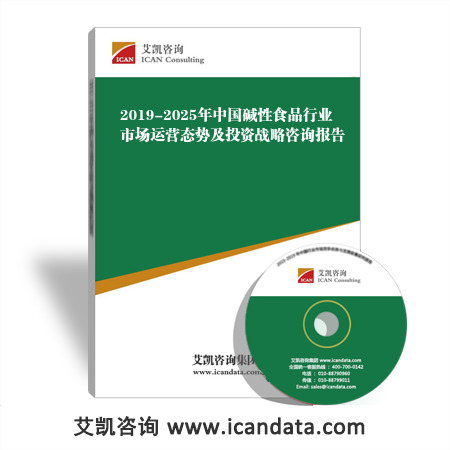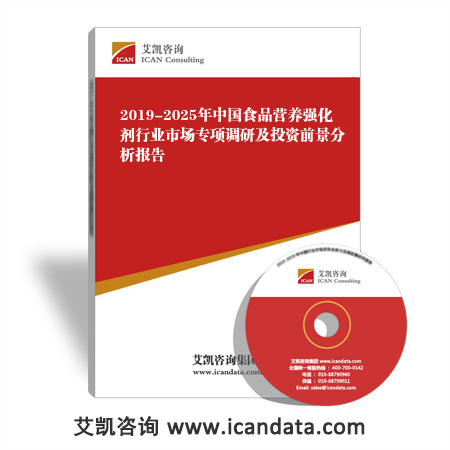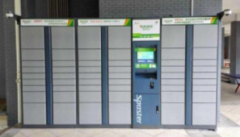导读:Clothing and Footwear, United Kingdom,服装,鞋类,市场报告 摘要 Clothing And Footwear in the United Kingdom market report offers a comprehensive guide to the size and shape of the market at a national level. It provides the latest retail sales data,
数据来源与研究方法:
- 对行业内相关的专家、厂商、渠道商、业务(销售)人员及客户进行访谈,获取最新的一手市场资料;
- 艾凯咨询集团对长期监测采集的数据资料;
- 行业协会、国家统计局、海关总署、国家发改委、工商总局等政府部门和官方机构的数据与资料;
- 行业公开信息;
- 行业企业及上、下游企业的季报、年报和其它公开信息;
- 各类中英文期刊数据库、图书馆、科研院所、高等院校的文献资料;
- 行业资深专家公开发表的观点;
- 对行业的重要数据指标进行连续性对比,反映行业发展趋势;
- 通过专家咨询、小组讨论、桌面研究等方法对核心数据和观点进行反复论证。
报告简介:

摘要
Clothing And Footwear in the United Kingdom market report offers a comprehensive guide to the size and shape of the market at a national level. It provides the latest retail sales data, allowing you to identify the sectors driving growth. It identifies the leading companies, the leading brands and offers strategic analysis of key factors influencing the market - be they new product developments, packaging innovations, economic/lifestyle influences, distribution or pricing issues. Forecasts illustrate how the market is set to change.
目录及图表
Why buy this report
- Get insight into trends in market performance
- Pinpoint growth sectors and identify factors driving change
- Identify market and brand leaders and understand the competitive environment
Product coverage
Clothing; Footwear
Executive summary
Clothing and footwear: a mature market
The UK clothing and footwear market is essentially mature. Although a necessary requirement of life and particularly influenced by fashion trends, both clothing and footwear were by hit by price discounting during recent years. Increased competition at retail level, particularly due to the growing involvement of grocery retailers, caused price deflation in most clothing and footwear. This situation was exacerbated by the growing globalisation of product supply, with UK production increasingly relocated to low-cost centres in Eastern Europe and Asia.
Grocery retailers are becoming important
The profile of UK distribution channels for clothing and footwear changed during the 1990s. There was a major shift away from traditional outlets, such as department stores, clothing independents and variety stores, in favour of grocery retailers and discounters. This reflects both the growing importance of casual formats and the downward pressure of cheaper, imported products on retail price levels. Additionally, shopping is increasingly moving away from traditional high street locations to out-of-town shopping centres, where families may spend a good part of the day browsing and shopping in a wide range of stores.
Designing “in”, manufacturing “out”
There was a major shift in production of both clothing and footwear away from the UK to low-cost production centres, primarily in Asia or Eastern Europe. For example, Marks & Spencer abandoned its previous strategy of sourcing the majority of its products from UK production in 2005 and it now sources around 17% of clothing materials from India and 44% from Asia. To compensate for this shift in production, leading UK manufacturers began to emphasise their expertise in product design in order to add value to the finished product.
Buy fashionable items, dress them, and buy again
The UK consumer increasingly regards an item of clothing or footwear as disposable, rather than an investment. Quality remains important, but fashion plays a much greater role in everyday purchasing, so that an item may not be expected to last longer than one season. This placed an emphasis on price levels and significantly increased availability of 'value' brands in supermarkets and discounters, which stimulated volume sales without contributing to value sales development.
Casual formats became the rule
Although, formal clothing and footwear are normally seen as a symbol of success, taste and sophistication, casual clothing strengthened its position as the most important format. Companies are in general flexible in their dress codes and casual clothes gradually gained position on formal formats. Moreover, in social events such as business meetings, conferences, restaurants or parties, the ‘smart casual’ dress code is typically the norm. There is also a growing emphasis on purchasing clothing and footwear for evening and sports, as lifestyles changed.
Table of contents
CLOTHING AND FOOTWEAR IN THE UNITED KINGDOM : MARKET INSIGHT
EXECUTIVE SUMMARY
Clothing and footwear: a mature market
Grocery retailers are becoming important
Designing “in”, manufacturing “out”
Buy fashionable items, dress them, and buy again
Casual formats became the rule
KEY TRENDS AND DEVELOPMENTS
New lifestyle factors shape consumer demand
Consumer perceptions are changing
Branding is key
Grocery retailers’ aspirations are high
Manufacturing moving away from the UK
Weather plays a role in consumer purchasing
Women’s clothing predominates, but menswear is recovering
Childrenswear an increasing focus
MARKET DATA
Table 1 Sales of Clothing and Footwear by Sector: Volume 2001-2006
Table 2 Sales of Clothing and Footwear by Sector: Value 2001-2006
Table 3 Sales of Clothing and Footwear by Sector: % Volume Growth 2001-2006
Table 4 Sales of Clothing and Footwear by Sector: % Value Growth 2001-2006
Table 5 Clothing and Footwear Company Shares 2004-2006
Table 6 Clothing and Footwear Brand Shares 2004-2006
Table 7 Sales of Clothing and Footwear by Distribution Format: % Analysis 2001-2006
Table 8 Forecast Sales of Clothing and Footwear by Sector: Volume 2006-2011
Table 9 Forecast Sales of Clothing and Footwear by Sector: Value 2006-2011
Table 10 Forecast Sales of Clothing and Footwear by Sector: % Volume Growth 2006-2011
Table 11 Forecast Sales of Clothing and Footwear by Sector: % Value Growth 2006-2011
DEFINITIONS
Clothing
Footwear
Summary 1 Research Sources
LOCAL COMPANY PROFILES - UNITED KINGDOM
ARCADIA GROUP LTD - CLOTHING AND FOOTWEAR - UNITED KINGDOM
STRATEGIC DIRECTION
KEY FACTS
Summary 2 Arcadia Group Ltd: Key Facts
Summary 3 Arcadia Group Ltd: Operational Indicators
COMPANY BACKGROUND
PRODUCTION
COMPETITIVE POSITIONING
Summary 4 Arcadia Group Ltd: Competitive Position 2006
MARKS & SPENCER PLC - CLOTHING AND FOOTWEAR - UNITED KINGDOM
STRATEGIC DIRECTION
KEY FACTS
Summary 5 Marks & Spencer Plc: Key Facts
Summary 6 Marks & Spencer Plc: Operational Indicators
COMPANY BACKGROUND
PRODUCTION
COMPETITIVE POSITIONING
Summary 7 Marks & Spencer Plc: Competitive Position 2006
NEXT PLC - CLOTHING AND FOOTWEAR - UNITED KINGDOM
STRATEGIC DIRECTION
KEY FACTS
Summary 8 Next Plc: Key Facts
Summary 9 Next Plc: Operational Indicators
COMPANY BACKGROUND
PRODUCTION
COMPETITIVE POSITIONING
Summary 10 Next Plc: Competitive Position 2006
STYLO PLC - CLOTHING AND FOOTWEAR - UNITED KINGDOM
STRATEGIC DIRECTION
KEY FACTS
Summary 11 Stylo Plc: Key Facts
Summary 12 Stylo Plc: Operational Indicators
COMPANY BACKGROUND
PRODUCTION
COMPETITIVE POSITIONING
Summary 13 Stylo Plc: Competitive Position 2006
UMBRO PLC - CLOTHING AND FOOTWEAR - UNITED KINGDOM
STRATEGIC DIRECTION
KEY FACTS
Summary 14 Umbro Plc: Key Facts
Summary 15 Umbro Plc: Operational Indicators
COMPANY BACKGROUND
PRODUCTION
COMPETITIVE POSITIONING
Summary 16 Umbro Plc: Competitive Position 2006
CLOTHING IN THE UNITED KINGDOM
HEADLINES
TRENDS
COMPETITIVE LANDSCAPE
PROSPECTS
SECTOR DATA
Table 12 Sales of Clothing by Subsector: Volume 2001-2006
Table 13 Sales of Clothing by Subsector: Value 2001-2006
Table 14 Sales of Clothing by Subsector: % Volume Growth 2001-2006
Table 15 Sales of Clothing by Subsector: % Value Growth 2001-2006
Table 16 Sales of Men’s Outerwear by Type 2001-2006
Table 17 Sales of Women’s Outerwear by Type 2001-2006
Table 18 Sales of Childrenswear by Type 2001-2006
Table 19 Clothing Company Shares by Retail Value 2004-2006
Table 20 Clothing Brand Shares by Retail Value 2004-2006
Table 21 Sales of Clothing by Distribution Format: % Analysis 2001-2006
Table 22 Forecast Sales of Clothing by Subsector: Volume 2006-2011
Table 23 Forecast Sales of Clothing by Subsector: Value 2006-2011
Table 24 Forecast Sales of Clothing by Subsector: % Volume Growth 2006-2011
Table 25 Forecast Sales of Clothing by Subsector: % Value Growth 2006-2011
FOOTWEAR IN THE UNITED KINGDOM
HEADLINES
TRENDS
COMPETITIVE LANDSCAPE
PROSPECTS
SECTOR DATA
Table 26 Sales of Footwear by Subsector: Volume 2001-2006
Table 27 Sales of Footwear by Subsector: Value 2001-2006
Table 28 Sales of Footwear by Subsector: % Volume Growth 2001-2006
Table 29 Sales of Footwear by Subsector: % Value Growth 2001-2006
Table 30 Sales of Footwear by Type 2001-2006
Table 31 Footwear Company Shares by Retail Value 2004-2006
Table 32 Footwear Brand Shares by Retail Value 2004-2006
Table 33 Sales of Footwear by Distribution Format: % Analysis 2001-2006
Table 34 Forecast Sales of Footwear by Subsector: Volume 2006-2011
Table 35 Forecast Sales of Footwear by Subsector: Value 2006-2011
Table 36 Forecast Sales of Footwear by Subsector: % Volume Growth 2006-2011
Table 37 Forecast Sales of Footwear by Subsector: % Value Growth 2006-2011
市场报告服装
















